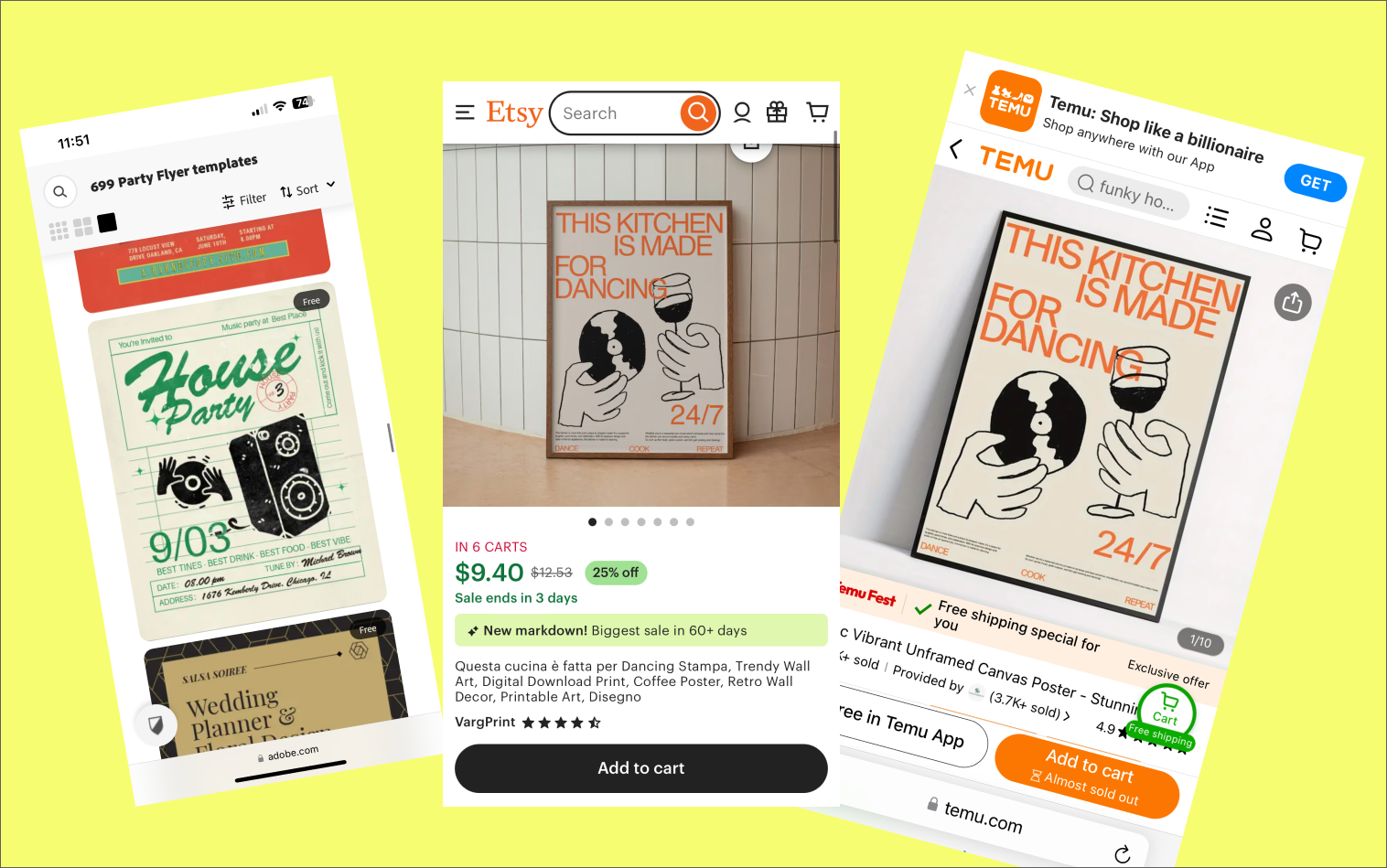Going Viral w/ House Party

The project that went viral: House Party
You’ve probably seen this poster before. It’s been pinned, reposted, resold, and reinvented since we made it back in 2020. And yet, chances are, you had no idea it came from us.
Yes, folks, we’re talking about House Party—our most recognizable project. Not because it’s proudly credited to After Hours, but because it’s been endlessly recreated by the “greats”: Shein, Temu, Etsy resellers, Adobe (as a template, of course), and anyone on Pinterest armed with image trace and a dream.
When we first shared House Party in 2020, our ambitions were modest: a few likes, a few reposts on the design Instagram pages of the time (what even happened to those pages? A mystery for another day). What we didn’t expect was a global scavenger hunt. Spotting our work has become something of a sport. A Shein tote bag here, a band tee there, or—most recently—lining the walls of a café in Virginia. Yes, we have photo evidence of all three. DM us. If we had a dollar for every sighting, we’d be running After Hours from a yacht.
Going viral was always the dream. Just… not like this. Seeing your work turned into digital detritus comes with existential questions: does sharing online mean surrendering ownership? And how does something you poured so much thought into end up feeling so diluted?
They say no design is truly original. And sure, we get it—everything builds on something that came before. But there’s a line between being “inspired by” and just… stealing. A tribute reimagines its source; a knockoff simply replicates it. (Temu’s “Dancing in the kitcehn” [sic], we’re looking at you.)
If House Party has taught us anything, it’s that the internet is both a designer’s greatest stage and its biggest liability. On one hand, your work can reach places you never imagined. On the other, it’s a free-for-all, where originality becomes currency and creativity is endlessly commodified. And the kicker? It’s often massive corporations doing the copying, raking in profits while eroding the very thing they’re replicating.
The cycle is painfully predictable: a design takes off, brands copy it, and soon, everything starts to feel like a knockoff of a knockoff. Originality fades, and sameness takes center stage.
Sure, we’ve toyed with calling out the copycats. But what’s the protocol? A DM to Shein? A scathing Etsy review? And even if we did, would it solve anything—or just echo into the algorithmic void?
While we haven’t cracked the code just yet, here’s where we’ve landed:
1. Stop sharing our work (probably unrealistic).
2. Play them at their own game. We could start making our own posters, prints, and templates—take back the narrative and, at the very least, some of the profits. (For context: it’s already selling for $13 a pop on Etsy. On Temu, it’s going for $5 and has sold over 6,500 times. Math’s not my strong suit, but that looks like a juicy return).
3. Turn off the internet entirely.
If you’ve got better ideas, our inbox is open.
Anyway, those are my musings for today. If you’ve made it this far, thanks for letting me spiral.
Until next time.